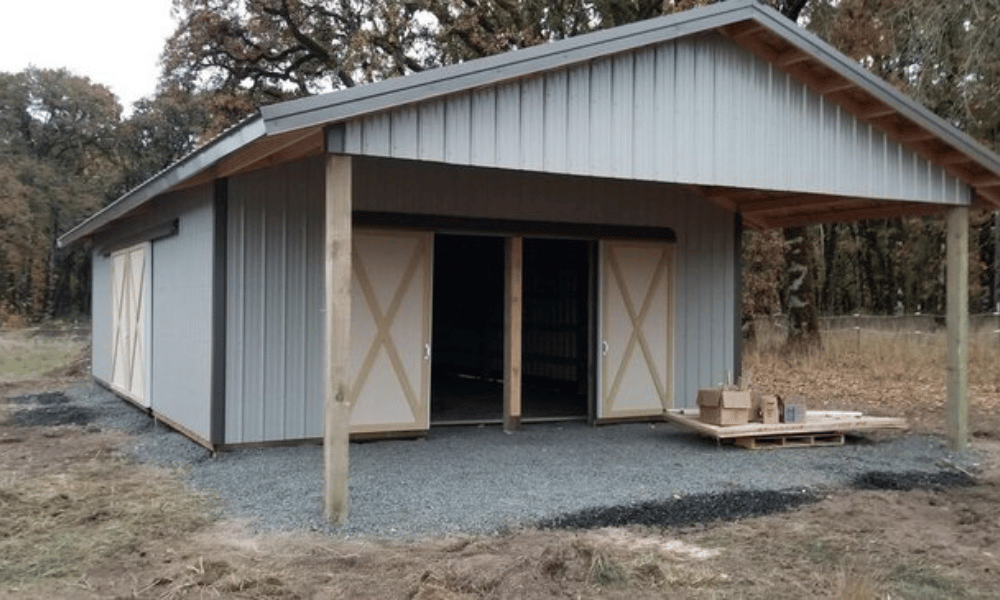Introduction
When you think about American farming, images of vast fields, hardworking farmers, and rustic barns often come to mind. One structure that has played a pivotal role in this landscape is the pole barn. These unique buildings have been utilized for various agricultural purposes over the decades, serving as storage spaces, livestock shelters, and even workshops. In this article, we will delve into the historical significance of pole barns in American farming, exploring their design, functionality, and evolution over time.
Exploring Historical Uses of Pole Barns in American Farming
Pole barns have a rich history that mirrors the development of agriculture in the United States. Originally designed as simple structures made from wood poles or posts driven into the ground, these barns provided an economical and efficient solution for farmers looking to house equipment, animals, and produce. Their design allowed for quick construction and ample space without the need for extensive foundations.

The Origins of Pole Barns: A Brief History
The roots of pole barns can be traced back to traditional barn-building techniques used by early settlers in America. These settlers faced numerous challenges when establishing their farms; they needed sturdy structures that could withstand harsh weather conditions while being cost-effective.
Early Construction Techniques
In the early 20th century, farmers began using treated wood poles as a foundation for their barns. This method allowed them to build on uneven terrain without extensive groundwork. The simplicity of this design meant that farmers could easily assemble the structure themselves or enlist local help.
Regional Variations in Design
As farming practices varied across regions due to climate and geography, so did the designs of pole barns. While some areas opted for larger structures to accommodate livestock or machinery, others focused on smaller buildings tailored for grain storage or equipment shelters.
Pole Buildings: Essential Features and Benefits
One of the standout characteristics of pole buildings is their versatility. They are not just limited to agricultural use but have also found applications in commercial settings and residential properties.
Cost-Effectiveness
Building a pole barn is significantly cheaper than constructing a traditional barn with a full foundation. Farmers can save on materials and labor costs while still obtaining a functional building.
Durability and Longevity
When properly constructed with quality materials, pole buildings can last for decades. The elevated design minimizes damage from water accumulation and pests, ensuring longevity.
Uses of Pole Barns Across Different Eras
Throughout history, pole barns have served various functions depending on societal needs and technological advancements.
Livestock Housing in Early Farms
In the early days of American agriculture, pole barns primarily housed livestock such as cattle, sheep, and pigs. These structures provided shelter from harsh weather conditions while allowing farmers easy access to their animals.
Storage Solutions During Post-War Expansion
After World War II, there was a surge in agricultural production to feed an expanding population. Pole barns became crucial storage solutions for excess harvests during this era.
Transitioning Functions: From Livestock to Machinery Storage
As farming technology advanced with tractors replacing horses and other machinery becoming essential tools for productivity, pole barns evolved alongside these changes.
Adaptation for Modern Farming Needs
Modern pole buildings are often designed with specific features such as high ceilings for tall equipment or reinforced walls to hold heavy machinery safely.
State-of-the-Art Innovations in Pole Building Design
The introduction of new materials and construction methods has brought significant improvements to traditional pole barn designs.
Eco-Friendly Materials
Today’s builders frequently use eco-friendly materials such as recycled steel roofing or sustainably sourced wood poles which appeal to environmentally conscious farmers.
Energy Efficiency Features
With rising energy costs and environmental concerns at the forefront of agricultural practices today, many modern pole barns incorporate energy-efficient designs such as natural lighting through skylights or insulated panels.
Cultural Significance: Pole Barns in Community Life
Beyond their practical uses on farms, pole barns often serve a social purpose within rural https://ameblo.jp/beaueopz841/entry-12886428489.html communities.
Community Gatherings & Events
Many rural communities utilize large pole buildings as gathering places—whether it’s hosting county fairs or community dinners—these structures foster connections among neighbors.
Pole Barns vs Traditional Barn Styles: A Comparative Analysis
While both styles serve similar purposes on farms today; there are notable differences between traditional barn styles like gambrel roofs versus modern pole building designs.
| Feature | Traditional Barn | Pole Building | |-------------------|-----------------------|-----------------------| | Construction Time | Longer | Shorter | | Cost | Higher | Lower | | Flexibility | Limited | Highly adaptable |
The Role of Pole Buildings in Sustainable Agriculture
In recent years sustainability has become an important aspect influencing construction choices among farmers who want environmentally friendly options without sacrificing functionality.
Sustainable Practices Implemented
Farmers have started implementing practices such as rainwater catchment systems integrated within their pole structures which not only helps conserve water but also reduces utility bills significantly.
FAQs about Pole Barns
What are pole buildings?- Pole buildings refer specifically to structures built using vertical posts set deep into the ground rather than relying on full foundations like traditional buildings do.
- With proper maintenance—including regular inspections—they can last decades; some may even reach up to 50 years.
- Absolutely! Many builders offer customization options including size variations based on personal needs along with features like windows or insulation.
- Yes! Always check local zoning laws regarding agricultural structures since regulations vary widely by region.
- Common materials include treated lumber for poles/frames along with metal siding/roofing which provide durability against weather elements.
- Most areas require permits especially if your structure exceeds certain dimensions; always consult local authorities before beginning any construction project!
Conclusion
In summary, exploring historical uses of pole barns in American farming reveals how these simple yet effective structures have adapted through time—serving diverse roles from livestock housing to machinery storage while fostering community spirit along the way! As agriculture continues evolving towards more sustainable practices incorporating modern innovations—pole buildings remain at the forefront providing flexibility necessary amidst changing demands within our ever-growing food systems today!